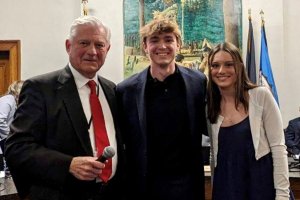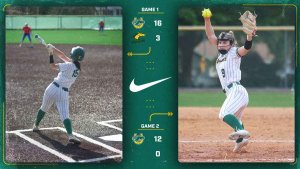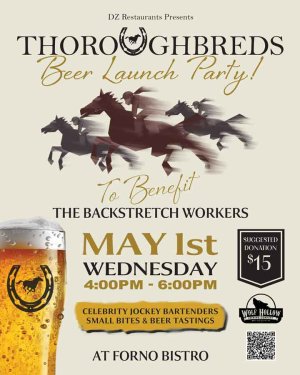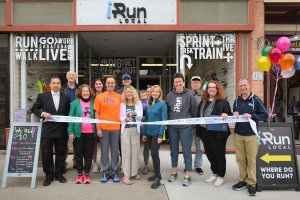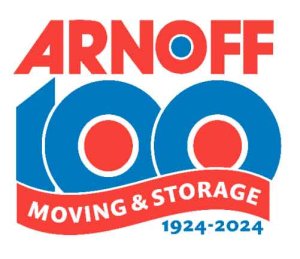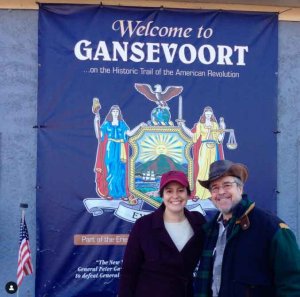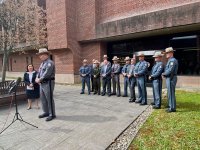... Part Two of a Three Part Series ...
THE FABULOUS FIFTIES
New Jersey racing took off like the great thoroughbreds that would soon race there. By the mid-1950s, the attendance and mutuel handle at Garden State Park was almost on a par with Belmont and Jamaica. Monmouth Park and Atlantic City were not far behind. The racing dates were a perfect meld for success. Garden State ushered the season in with four weeks of racing in May, wrapping it up on Memorial Day. When it started to heat up on the Jersey shore, Monmouth Park got the nod. The prime dates fit right into the vacation season. When Monmouth closed in mid-August, it was time for Atlantic City to showcase its version of Jersey Racing. The meeting raced into the first week of October. Then it was back to Garden State for the final month of racing.
The three owners were faced with a task of introducing a signature race, a main event that would bring the country’s top racehorses to their tracks. Gene Mori went all in. In 1953 he introduced the Garden State Futurity, a race for two-year-old colts. In an era that 100,000-dollar stakes races were about as rare as a bottle of 1928 Lafite, Mori offered a purse of 300,000 dollars. The move was brilliant. Every October it would bring the best of the juveniles in training to take a shot at the largest purse offered on the American horse racing scene.
At the Jersey Shore, Amory Haskell took the only route a gentleman of his stature could envision. He offered a handicap race at the classic distance of one and one quarter miles for three-year olds and upwards. The purse was set at 100,000 dollars and was named the Monmouth Handicap. It was a resounding success. The event almost overnight became one of the most important destinations on the summer racing calendar.
Now it was John Kelly’s turn. Turf racing was in its infancy. On the eastern seaboard only, Miami’s Hialeah Park and Laurel Racetrack in Maryland offered quality racing on that surface. Soon after Kelly opened Atlantic City, he embarked on the construction of what was to be the finest grass surface in the United States. Kelly’s turf course made its debut during the 1948 season. It was an immediate fan favorite. Kelly needed a race to highlight his new work of art. In 1953 he did just that. He introduced The United Nation’s Handicap. The event was to be contested at one and three sixteenths of a mile and the purse was tagged at the magical number of 100,000 dollars. Kelly had his signature race. The great turf champion Round Table took the event on two occasions. The immortal Dr. Fager would also have his name engraved on the stunning trophy. Kelly had made the perfect choice. The race became synonymous with world class turf racing.
The Golden Triangle now had important races on its calendar that had championship quality. The time had come. In 1957 three great racehorses were about to converge on Garden State Park to settle Horse of the Year honors. It would be Gene Mori’s finest hour.
RACE FOR THE CROWN
The year 1957 was a banner season for the Sport of Kings. Seldom do three Superb race horses compete on a scale that happened that year. Even their names were magnificent. They were Bold Ruler, Round Table and Gallant Man. Throughout the entire season the trio raced their way to glory. They found their way to the winner’s circle in many of the most important races in the country. It was time to decide who was the best of the three. Mori got lucky on this one. The race was scheduled for November 9. Normally Horse of the Year honors would have been settled with the Fall Classics at Belmont. Fortunately for Mori, the New York races had not resolved the issue. Gallant Man had recently won the prestigious Jockey Club Gold Cup to add to his Belmont Stakes and Travers scores. Round Table was on a win skein taking eleven straight stakes at racetracks from coast to coast. As for Bold Ruler, after taking The Preakness earlier that Spring, he had swept seven of his last nine in grand fashion. He was primed for his best effort.
The Trenton Stakes was the perfect fit to decide who deserved the sport’s highest honor. The race was contested at the classic distance of one and one quarter miles, with a purse of 75,000 dollars. More than 40,000 fans packed the stands for the race. The three contestants made their way onto the track at exactly four o’clock. Ten minutes later they were led into the starting gate. Eddie Arcaro had the mount on Bold Ruler. He jumped out to an early lead. Bill Shoemaker aboard Gallant Man chased him to no avail. Round Table was a distant third. Bold Ruler cruised home to an easy victory. Mr. Mori was on clouds number one through nine. A race at his track had just decided Horse of the Year honors for 1957. New Jersey was now a very big player in championship level horse racing.
NEW YORK PLANS THE FUTURE
It did not take long for the New York Racing establishment to take notice that changes were needed to stay on top of the horse racing game.
New Jersey could show off three state-of-the-art facilities. It was clicking on every level. Attendance and betting were going through the roof. Championship quality races dotted their calendars. Trainers and jockeys enjoyed the atmosphere at the shore. Top notch riders moved their tack to the Garden State. Future Hall of Famers Bill Hartack, Walter Blum, Sammy Boulmetis and Steve Brooks were among them.
In the year 1955 New York racing took a dramatic turn: the four tracks that raced there were taken over by the state. The New York Racing Association was formed to oversee the new venture. Without hesitation a plan was put into action. The facilities had become run down. Although Belmont and Saratoga had history and charm, Aqueduct and Jamaica were quite the opposite. They were outdated and could not handle the overflowing crowds that New York tracks were accustomed to. The first move was to close Aqueduct with the intention of building a new, fan-friendly track that could handle massive crowds. Jamaica would stay open until the project was complete. Then its racing dates would be switched to the new Big A. When racing resumed their Belmont was torn down. It would reappear in 1968. The charm of the old track was still there, with one major difference. The new Belmont was built to accommodate 80,000 fans. Saratoga the only upstate facility was guaranteed four weeks of racing every August. The NYRA was looking to the future in a very big way.
THE BOOMING SIXTIES
1960 opened up with a bang at Garden State Park. The Jersey Stakes was renamed the Jersey Derby. The race had roots as far back as the 1860s. Public Relations Director Tommy Roberts came up with the idea of naming every race with a Civil War theme. The infield of the track was transformed into a battlefield. A live Civil War battle was staged to the delight of the unprecedented crowd. There were cavalry charges. Cannons and Gatling guns were added to give the battle an authentic appearance.
Both the Kentucky Derby and Preakness winners were enticed to compete prior to the running of the Belmont Stakes, twelve days later. This was the crowning touch that brought the race to national prominence; the extravaganza was a massive success. The race became a Memorial Day tradition. The first running exceeded all expectations. A New Jersey record 50,000 fans attended the festivities.
At Monmouth, Amory Haskell sweetened the pot for the Sapling and Sorority Stakes. Those races drew the top two-year-old colts and fillies to the track. The great Buckpasser took the Sapling in 1965. The outstanding filly Queen of the Stage prevailed in the 1967 Sorority. The main event was still the Monmouth Handicap. The 1962 rendition saw Carry Back get the best of the immortal Kelso. Nashua, Bold Ruler and Sword Dancer were also among the great champions to prevail in the Monmouth Headliner.
Racing was at its peak in New Jersey. On Memorial Day of 1967, 52,000 fans jammed Garden State to get a glimpse of the great Dr. Fager strutting his stuff in the Jersey Derby. That summer Monmouth Park hosted 43,000 fans on a Saturday afternoon, setting a one-day attendance mark. A week later four million dollars were wagered at the track, shattering the existing record. The next week Atlantic City posted a one-day wagering mark when over three million dollars in bets went through the mutuel machines. All three tracks had reached dizzying heights. 1967 can be looked back on as the year that the high-water mark of New Jersey racing had been achieved.
New York was also running on all cylinders. The new super tracks were built for crowds. The fans would not disappoint. On Memorial Day in 1965 over 72,000 packed the Big A setting a one-day attendance record. At Belmont 82,000 were counted at the turnstiles for the running of the Belmont Stakes six years later. New York Racing was in high gear. Saratoga stayed pretty much constant during the sixties. Coming here was a welcome relief from the hustle and bustle of the downstate racing scene.
New York would never be threatened again by the New Jersey Racing establishment. During the next decade, unforeseen forces were about to change the New Jersey racing map forever.




